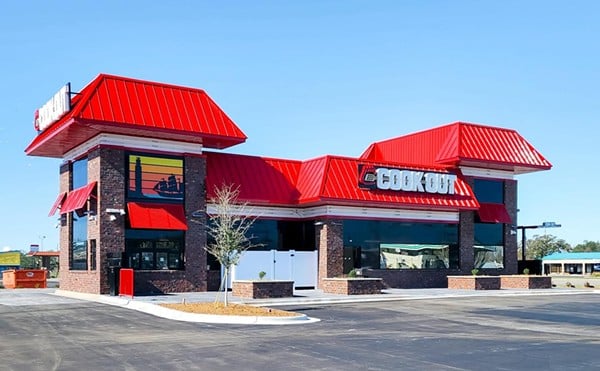It is decidedly awkward to argue against an organization like Wayside Christian Mission.
The nonprofit agency tasked with helping the homeless and impecunious does objective good for Louisville, offering as many as 650 men, women and children a warm reprieve every night. Its facilities need an update: Wayside’s three main buildings are mostly sound but ramshackle, and walking through the campus, one is greeted with the overwhelming sense that every addition and subtraction since the agency moved fully into its East Market Street digs in 1991 has been conducted on a shoestring budget.
So the planned expansion of Wayside’s campus in the East Market District of downtown — a bona fide, gentrifying arts district whose old buildings provide much of its character — has been a long time coming: According to Nina Moseley, Wayside’s chief operating officer, the agency has spent a decade planning and raising close to $4.1 million to cover the costs, a goal it has nearly achieved.
But the plans to tear down two buildings — intent to demolish signs were posted a couple weeks ago, and Wayside’s contractor is working with Metro to square demolition orders — have some neighbors upset. None of the three buildings that are now part of Wayside’s labyrinthine, piecemealed campus is protected by historic designations. But at least two, both Victorian-style, are intrinsically valuable to the character of the district, the neighbors say.
Moseley said there is no way her agency could even keep its current pace with the campus in this condition; in fact, one of the buildings in question has been vacant more than three years, it being structurally unsound.
Wayside has adapted its plan to maintain the facades of the buildings as an act of appeasement. Some say it’s not enough, and that the old bones of these structures are just in need of some new love.
The Wayside property
consumes most of the 800 block of East Market, from Shelby Street to the Flame Run building. It is also a block deep, with some frontage on Jefferson Street as well.
The basic idea of the expansion is to connect the eastern- and westernmost points with a large, homogenous structure in the center. The new structure would house men, women and children in both temporary and semi-permanent facilities — something Wayside does now in a significantly less unified fashion. The men are in the agency’s Jefferson Street building, a place packed to the gills with the stuff of the damaged, empty buildings in the Market campus: boxes of files, computers, the detritus of the modern office. Women and children share tight quarters on Market in a place that is claustrophobic at best.
Moseley is a member of the East Market Business Association, a body consisting of 60 area businesses that has taken no formal position on the plans. According to association head Bill Marzian, the EMBA “remains concerned about taking down those buildings, but we haven’t done anything to stop their planning or to cause any delays in their schedules.”
According to Moseley, the EMBA has been kept in the loop throughout the process. In fact, she said, Wayside paid as much as $200,000 to revise the plans so that the two facades would be saved.
But that’s not enough, say Gill Holland and others. Holland is a film producer and general renaissance man whose Green Building on East Market — just a block west of Wayside — is set to be a LEED-certified, environmentally-responsible structure set in a Victorian-style building similar to Wayside’s.
“Keeping two of the facades is simply not enough, while I appreciate the thought behind it,” Holland said. “All the historic facades should be retained at a minimum, and any new construction should be in keeping with the rest of the neighborhood — old, quaint galleries, cafes and residences. Five years from now, Wayside may well choose to cash out of this property, and there is no way to put back the old buildings which give the neighborhood its flair and bring so many art tourists and diners here.”
Spirited e-mails have been circulating among concerned neighbors for the past two weeks, and Holland said he planned to meet with Moseley about the matter next week.
Cindy Brown Kinloch, president of the nearby Phoenix Hill Neighborhood Association, wrote in an e-mail to LEO that the association supports the work Wayside does but is skeptical about the demolition and has arranged to meet with Moseley soon.
Both that neighborhood association and the EMBA are also working to make the area a conservation district, a tool to impose certain building regulations that has been effective in Nashville. Disagreements with the business community have been the major hindrance to previous efforts at obtaining historic designation for the area.
Moseley said Wayside would continue discussions with all the neighbors, but she’s getting a bit frustrated. “It should not be a surprise because we’ve talked about this for years,” she said.
Contact the writer at [email protected]





